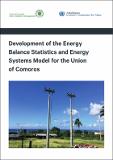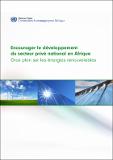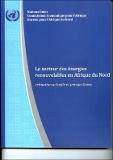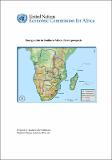Our Institutional Repository is currently undergoing an upgrade. The platform remains accessible for search and consultation. However, user login and content submissions are temporarily disabled. We appreciate your understanding.
Development of the energy balance statistics and energy systems model for the union of Comoros
| dc.description.abstract | The energy sector of Comoros is characterized by a reliance on firewood and petroleum products as the two main sources of final energy consumption in the country. The energy mix is 57% biomass, 2% electricity and 41% oil products. The role of renewable energy in generation is gradually increasing, but is still negligible compared to conventional energy sources. Considering the different sectors, household energy consumption accounts for 63% of total final energy consumption; the other main sources are the transport sector (32%) and the industrial and commercial sector (5%). Most of the biomass consumed is used for households and restaurants (93%) and ylang-ylang (essential oil) distilling (7%). The report focuses on the development of Comoros’ first energy balance statistics (for 2017) and on a nationally and regionally dis-aggregated energy systems model. It also analyses model scenarios on the basis of targets specified in the energy strategy 2033. The Comoros energy strategy identifies energy information as a key challenge to achieving the country’s development strategy. To bridge this challenge, the Comoros government seeks to develop energy balance statistics, to use as the evidentiary basis for long-term scenario analyses based on the country’s energy strategy. This report summarizes the outcomes of a data collection process spanning all economic sectors in Comoros. The historical energy balance of Comoros, in an overview of the energy production, consumption, trade, and transportation across all sectors is then presented. This energy balance is then used to identify gaps or other inconsistencies in the collected data, in order to develop a complete picture of energy flows in the country. | en |
| dc.title | Development of the energy balance statistics and energy systems model for the union of Comoros | en |
| ags.creatorCorporate | United Nations. Economic Commission for Africa | en |
| ags.subjectThesaurus | ENERGY PLANNING | en |
| ags.subjectThesaurus | ENERGY STATISTICS | en |
| ags.subjectThesaurus | ENERGY POLICY | en |
| ags.subjectThesaurus | ENERGY SERVICES | en |
| ags.subjectThesaurus | COMOROS | en |
| ags.subjectClassification | 03.10.00 ENERGY RESOURCES | en |
| ags.publisherPlace | Addis Ababa | en |
| ags.publisherName | UN.ECA | en |
| dc.date.accessioned | 2019-04-11T12:33:21Z | |
| dc.date.available | 2019-04-11T12:33:21Z | |
| dc.date.issued | 2018 | |
| dc.identifier.uri | https://hdl.handle.net/10855/41844 | |
| dc.format.extent | 52 p.:ill | |
| dc.language | eng | |
| dc.type | Working paper | |
| uneca.workflow.processed | true | |
| ags.creatorCorporate | Union des Comores Unité-Solidarité-Développemnt | |
| ags.availabilityNumber | b11929169 | |
| ags.availabilityNumber | 2018 | |
| ags.availabilityLocation | ECA-HQ | |
| ags.rights.termsofuse | public | |
| ags.JN | b11929169 | |
| uneca.language.supported | en |
Files in this item
This item appears in the following Collection(s)
-
Natural Resources Management [2805]




